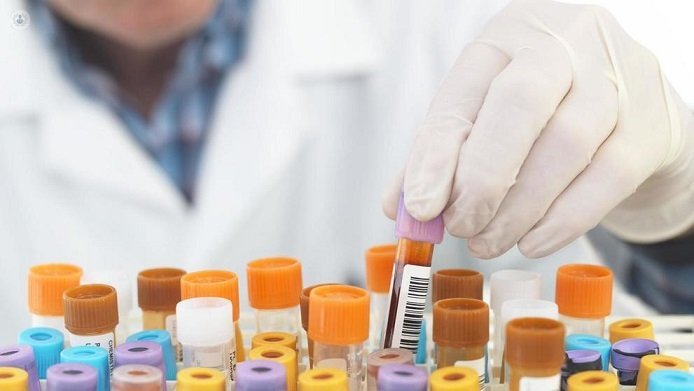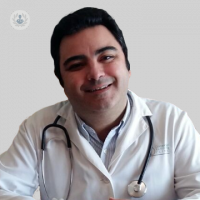Plasma growth factors in regenerative medicine
Written by:Growth factors plasma are proteins found in the tissues and are responsible for the repair of damaged tissue in diseases such tendinopathies, meniscal injuries or corneal and vascular ulcers, or alopecia, among others.

Plasma growth factors: what they are
In what is known as Regenerative Medicine, growth factors are proteins extraordinary diffusion tissues, either leukocyte or platelet origin, what is commonly called "platelet rich plasma". This technique has the function local or systemic, depending on the clinical application form, to act on the cell's reproductive cycle. Thus induces the proliferation thereof and differentiation of cells in various stages of maturation into mature elements, besides making new blood vessels and can repair or ischemic tissues malfuncionantes default cell oxygenation.
How plasma growth factors are obtained
Today the growth factors found in alpha granules that are referred to within the cytoplasm of platelets, and similar in leukocytes, especially in the mononuclear fraction thereof.
They are obtained through a systematic process of centrifugation of whole blood, which can finally get a concentrate rich in one cell type or another. Currently the scientific literature recognizes six procedures for obtaining plasma growth factors. One of them, named Alcaraz, Oliver et al 2014, was designed by the author of this article. The technique has been recognized by the European Society of Hematology, given its scientific and technical rigor, and has been widely reproduced in the world for being the highest performance that both platelet and white blood cell produces. He recently performed in the United States at a conference of experts in therapeutic procedures applied to specific clinical cases, receiving the award for best oral communication.
For rich plasma platelet growth factors, it considers the scientific consensus quality when it contains higher values to 1,000,000 platelets / mm3. Regarding rich plasma growth factors leukocyte, we consider effective when the leukocyte content exceeds 20,000 / mm3, 80% of which must be mononuclear cellularity.
Growth factors or other source can be one activated well with 1% calcium gluconate or bovine thrombin to activate when administered locally.
Differences between the technique of obtaining growth factors and stem cell procurement
The technique for obtaining growth factors and stem cells are not equal. The techniques of obtaining stem from various sources cells are essentially experimental, taking place mostly in the context of clinical trials and under strict sterile conditions in what are called white rooms, of which there are very few in Spain, especially in tertiary hospitals.
It is not true what is advertised often as plasma enriched with stem cells. In the amount of peripheral blood stem cells that are circulating it is negligible and are complex cell mobilization procedures necessary to implement its number in the bloodstream to useful figures for treatment, such as a hematopoietic stem cell transplant.
Obtaining growth factors should also be performed under conditions of extreme asepsis, either in laminar flow hood if an open technique, or closed by specific kits with proper certification of the European Economic Community system is used.
Who can undergo treatment with growth factors plasma
To ensure the adequacy of this procedure a thorough medical history should be performed with a systematic history and physical examination, plus a complete serologic, biochemical and hematological analytical control, after which the specialist in hematology consider whether the patient is suitable or not for the treatment.
There are a number of contraindications to the use of this therapy:- Pregnant patients- Concomitant treatment with anticoagulants or antiplatelet agents- Patients with hematologic or coagulation disorders- Patients with active cancer or infectious processes
Fields of application of growth factors
Every day new clinical applications are appearing for this type of therapy. Those specialties where there is clinical evidence for use are Traumatology and Dentistry.
Uses of growth factors and plasma results
It is increasingly used this technique to multitude of clinical applications. Of these, the most common where there is more scientific evidence Traumatology, for addressing emerging arthropathy, tendinopathies or meniscopathies and in dentistry, for repair of dental alveolar bed.
Other emerging fields where it is beginning to use, although scientific studies are still needed in the form of well-structured clinical trials are General Surgery, for addressing ulcers in diabetic patients or vascular ulcers, ophthalmology, for repair of corneal ulcers and Dermatology, for addressing certain types of alopecia.
The results obtained, depending on the clinical application assigned, intended to enhance cellular oxidative functionality in the administered tissue secondarily repairing ischemic tissue damage.
Side effects of plasma growth factors
Like any medical treatment is not free of side effects or mechanical especially of allergic origin (mild fever or rash), as small hematoma in the puncture site or administration.
However, when an autologous concentrate from the same patient, there are no problems of rejection.
Ensuring the quality of growth factors
This treatment is considered medicine since 2013 and, since June 2015 there is a mandatory record in the Spanish Agency of Medicines of those producers plasma growth centers. These should specify the responsible physician and clinical application where it is used and the preparation process.
Edited by Patricia Crespo Pujante


